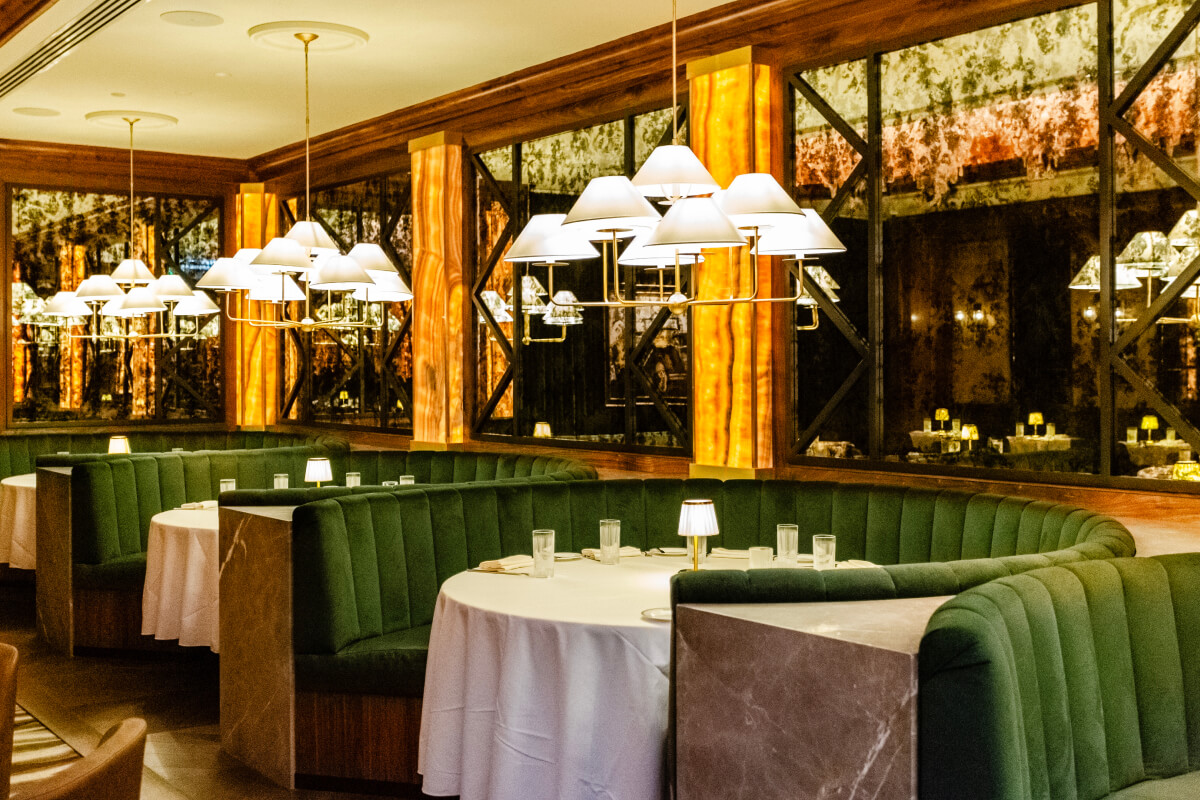Let me tell you something, folks. The Ruxton Photos have been making waves in the world of history, mystery, and crime enthusiasts for years now. These iconic images are more than just pictures—they’re a glimpse into a dark chapter of Scotland's past. If you’re curious about how these photos have captured imaginations worldwide, you’re in the right place. We’re about to unravel the story behind the Ruxton Photos and why they continue to fascinate so many people.
Picture this: it’s the 1930s, and Scotland is rocked by one of its most infamous crimes. The Ruxton case wasn’t just any murder—it was a sensational event that gripped the nation. At the heart of it all were the Ruxton Photos, which became a crucial piece of evidence in one of the most high-profile trials of the era. These photos aren’t just historical artifacts; they’re a window into the minds of detectives, forensic experts, and the media of the time.
What makes the Ruxton Photos so intriguing isn’t just their role in solving the crime but also the way they’ve been preserved and studied over the decades. They’ve inspired countless books, documentaries, and even conspiracy theories. So, if you’ve ever wondered what the fuss is all about, let’s dive into the story behind the Ruxton Photos and why they remain a topic of fascination for historians and true crime fans alike.
Read also:Pebbles And Tamtam The Ultimate Guide To This Iconic Duo
Here’s the deal: the Ruxton Photos aren’t just about crime; they’re about the evolution of forensic science, media coverage, and public perception. Stick around, and we’ll break it all down for you.
Table of Contents
- The History Behind the Ruxton Photos
- Biography: Dr. Buck Ruxton
- The Crime That Shook Scotland
- The Role of the Ruxton Photos in the Investigation
- Forensic Science: A Game-Changer
- Media Hype and Public Reaction
- Conspiracy Theories Surrounding the Ruxton Photos
- The Long-Term Impact on Forensic Science
- Preserving the Ruxton Photos for Future Generations
- The Legacy of the Ruxton Case
The History Behind the Ruxton Photos
The Ruxton Photos weren’t just random snapshots—they were meticulously taken during one of the most infamous murder investigations in Scottish history. Back in 1935, the case of Dr. Buck Ruxton sent shockwaves through the nation. The photos captured not only the crime scene but also the painstaking efforts of detectives and forensic experts to piece together the puzzle. But here’s the kicker: these photos weren’t just for the courtroom—they became a sensation in their own right.
So, how did the Ruxton Photos come to be? Let’s rewind to the 1930s, a time when forensic science was still in its infancy. The case involved the brutal murder of Isabella Ruxton and her maid, Mary Jane Rogerson. The photos documented the crime scene and the remains, providing crucial evidence that ultimately led to Dr. Buck Ruxton’s conviction. These images weren’t just for solving the case; they were a testament to the power of visual evidence in crime investigations.
Why Were the Ruxton Photos So Important?
Let’s break it down: the Ruxton Photos weren’t just random pictures; they were a groundbreaking use of photography in crime-solving. Here’s what made them so significant:
- They provided detailed documentation of the crime scene.
- They helped forensic experts identify key evidence.
- They played a pivotal role in the trial, influencing the jury’s decision.
But here’s the twist: the Ruxton Photos weren’t just about the case—they were about the evolution of forensic photography itself. They set a precedent for how crime scenes would be documented in the future.
Biography: Dr. Buck Ruxton
Before we dive deeper into the Ruxton Photos, let’s take a moment to understand the man behind the crime: Dr. Buck Ruxton. Born in India, Ruxton was a respected doctor in the Dumfries area of Scotland. But beneath his professional facade lay a dark secret that would soon come to light.
Read also:Alex Jones And Ozempic The Controversial Connection Thats Got Everyone Talking
Dr. Buck Ruxton: A Timeline
| Born | 1889 |
|---|---|
| Profession | Doctor |
| Location | Dumfries, Scotland |
| Crime | Murder of Isabella Ruxton and Mary Jane Rogerson |
| Conviction | April 1936 |
| Execution | October 1936 |
Ruxton’s life wasn’t just about medicine; it was about the secrets he kept hidden from the world. His marriage to Isabella Ruxton was tumultuous, and his infidelity eventually led to a deadly confrontation.
The Crime That Shook Scotland
Now, let’s talk about the crime itself. In September 1935, Isabella Ruxton and her maid, Mary Jane Rogerson, went missing. What followed was a harrowing investigation that led detectives to a remote location in England, where the dismembered remains of the victims were found. This is where the Ruxton Photos come into play.
The photos documented the grim discovery, showing the meticulous work of detectives as they pieced together the evidence. But here’s the thing: these photos weren’t just for the authorities—they were also used to inform the public. In a time before modern media, the Ruxton Photos became a way for people to understand the gravity of the crime.
Key Details of the Crime
- Victims: Isabella Ruxton and Mary Jane Rogerson
- Location: Near Haweswater Reservoir, England
- Perpetrator: Dr. Buck Ruxton
- Motive: Marital discord and infidelity
The crime shocked the nation, but it also highlighted the importance of forensic evidence in solving complex cases.
The Role of the Ruxton Photos in the Investigation
The Ruxton Photos weren’t just a collection of images; they were a crucial part of the investigation. They provided detectives with a visual record of the crime scene, helping them identify key pieces of evidence. But here’s the kicker: these photos weren’t just for the investigators—they were also used in the trial.
During the trial, the Ruxton Photos were presented to the jury, offering a vivid depiction of the crime scene. They helped establish the timeline of events and provided crucial context for the prosecution’s case. But here’s the twist: the photos also became a subject of public fascination. They were published in newspapers, sparking widespread interest in the case.
How the Ruxton Photos Changed the Game
Here’s why the Ruxton Photos were so groundbreaking:
- They set a new standard for forensic photography.
- They demonstrated the power of visual evidence in court.
- They highlighted the importance of preserving crime scenes for investigation.
But here’s the thing: the Ruxton Photos weren’t just about solving the case—they were about shaping the future of forensic science.
Forensic Science: A Game-Changer
The Ruxton case wasn’t just about the photos; it was about the role of forensic science in solving the crime. In the 1930s, forensic science was still in its early stages, but the Ruxton case helped propel it into the mainstream. The use of photography, fingerprint analysis, and other techniques became essential tools for investigators.
Here’s the deal: the Ruxton Photos were just one piece of the puzzle. Forensic experts used them to analyze the crime scene, identify the victims, and piece together the timeline of events. But here’s the twist: the case also highlighted the limitations of forensic science at the time. It wasn’t perfect, but it was a step in the right direction.
Key Forensic Techniques Used in the Case
- Photography
- Fingerprint analysis
- DNA testing (though still in its infancy)
The Ruxton case was a turning point for forensic science, proving its value in solving complex crimes.
Media Hype and Public Reaction
The Ruxton case wasn’t just about the crime; it was about the media circus that surrounded it. In the 1930s, newspapers were the primary source of information, and the Ruxton Photos became a sensation. They were published in newspapers across the UK, sparking widespread interest in the case.
But here’s the thing: the media coverage wasn’t always accurate. Sensationalized headlines and exaggerated stories sometimes overshadowed the facts. However, the Ruxton Photos provided a level of authenticity that helped counteract some of the misinformation.
How the Media Covered the Case
Here’s how the media played a role in shaping public perception:
- Newspapers published the Ruxton Photos, sparking public interest.
- Headlines sensationalized the crime, sometimes exaggerating the details.
- The public became captivated by the case, following every development closely.
But here’s the twist: the media coverage also helped bring attention to the importance of forensic science in solving crimes.
Conspiracy Theories Surrounding the Ruxton Photos
Let’s be real: any high-profile case is bound to attract its fair share of conspiracy theories. The Ruxton case was no exception. Over the years, people have speculated about everything from alternate suspects to hidden motives. But here’s the thing: the Ruxton Photos have been at the center of many of these theories.
Some theorists believe that the photos were tampered with or manipulated to fit a narrative. Others suggest that there may have been a cover-up involving key figures in the investigation. But here’s the twist: most of these theories lack credible evidence. The Ruxton Photos remain one of the most reliable pieces of evidence from the case.
Common Conspiracy Theories
- The photos were altered to implicate Dr. Ruxton.
- There was a second perpetrator involved in the crime.
- Key evidence was withheld from the trial.
But here’s the thing: while conspiracy theories make for good drama, the Ruxton Photos remain a cornerstone of the case.
The Long-Term Impact on Forensic Science
The Ruxton case had a lasting impact on forensic science. It demonstrated the power of visual evidence in crime investigations and set a precedent for how crime scenes should be documented. But here’s the twist: it also highlighted the importance of preserving evidence for future analysis.
Today, forensic science is a highly advanced field, but the Ruxton case played a crucial role in its development. The use of photography in crime investigations has become standard practice, and the Ruxton Photos remain a testament to their importance.
Key Takeaways from the Ruxton Case
- Forensic photography is an essential tool in crime investigations.
- Preserving evidence is crucial for solving complex cases.
- Public perception can be shaped by visual evidence.
The Ruxton case was a turning point for forensic science, proving its value in solving crimes and shaping public perception.
Preserving the Ruxton Photos for Future Generations
Now, let’s talk about the future. The Ruxton Photos are more than just historical artifacts—they’re a valuable resource for historians, forensic experts, and true crime enthusiasts. But here’s the thing: preserving them for future generations is no small task.
Efforts are underway to digitize the Ruxton Photos, ensuring they remain accessible to researchers and the public. But here’s the twist: preserving these


